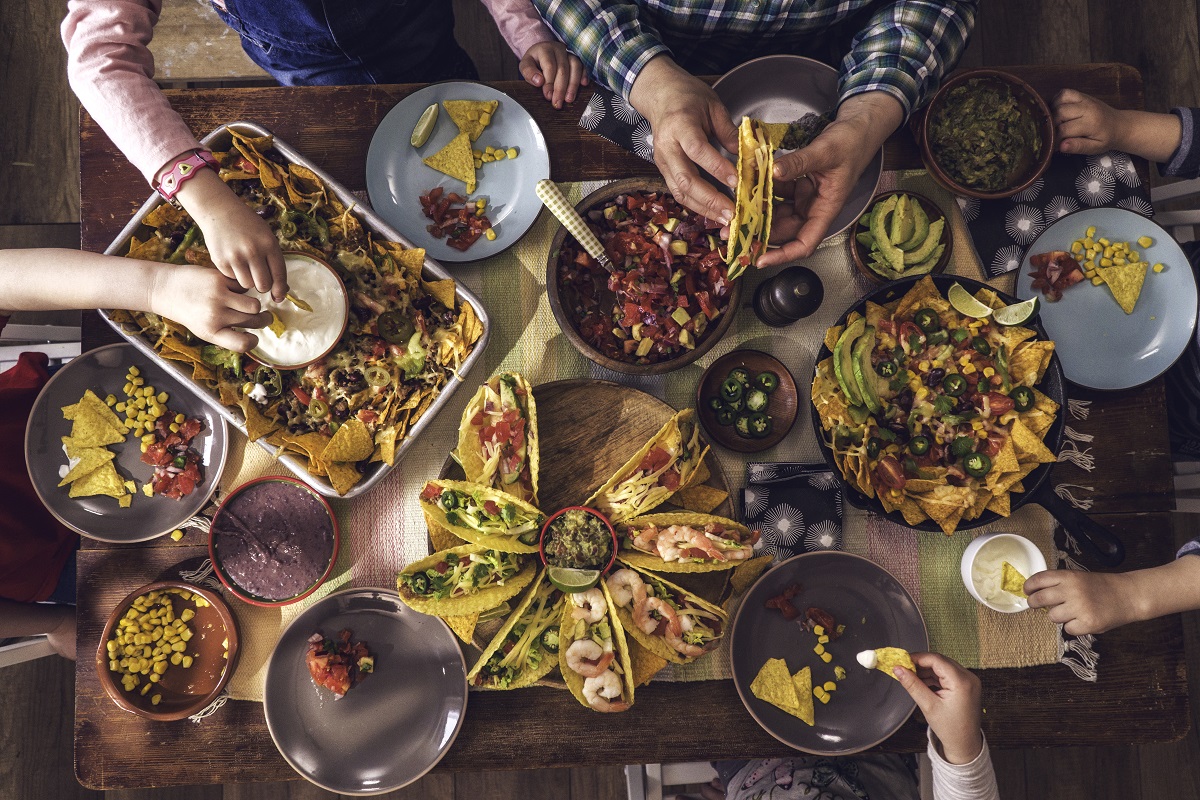The internet and food have always been kindred spirits—you could say they go together like two peas in a pod. Canadians use the internet to research their restaurant options, pin their favourite recipes and no one seems to be able to resist posting a ‘gram of their eggs benedict.
Restaurant websites are a special category that can make us hangry. Hungry because of all the delicious food, and angry because restaurant websites can often be pretty lackluster: PDF menus, hidden phone numbers, and missing pictures of food can lead to lost business.
We understand that quite literally, restaurant owners might have bigger fish to fry than to spend time developing a complex website. With that in mind, we’ve put together a seven tips that any restaurant owner can follow to produce a professional website.
7 tips on how to create a great restaurant website
1. Use a mobile-friendly website builder
A website builder is a great way to build a professional-looking website without facing a massive learning curve. There are plenty of templates and vendors to choose from out there. Squarespace and Wix have some great themed templates specifically for restauranteurs.
Web builders offer no-nonsense tools and features that make building a website a piece of cake. Plus, many of them are designed with a mobile view in mind, so no matter what device your customers are viewing your website on, it will be functional and look great.
2. Be strategic with your menu
One of the primary reasons a potential customer will visit your website is to take a peek at the menu. While your printed menu may be an opportunity to get creative, on your website your menu should be displayed in a way that is easy to read and to navigate.
If a user has to scroll through huge images, click on multiple sections, or sit through useless animations just to find out what you serve, you may lose them.
Your website’s menu may serve a different purpose depending on what kind of restaurant you run. For a pizza joint, it may be worthwhile to announce weekly deals. For a farm-to-table restaurant that changes its menu with the seasons, the website should reflect and highlight what the changes are.
No matter your cuisine, your menu is the most important content on a restaurant’s website and should be accurate and up-to-date at all times. Don’t forget to include nutritional information, allergy warnings, and prices as well.
Also, we know it can be tempting, but please don’t upload a PDF of your menu. This is a common mistake that can sink your website.

Why is using a PDF menu a bad idea? PDFs are difficult to navigate, not mobile-friendly, and a pain to update. The alternative, creating your menu in HTML, makes it easier to update if a menu item or price changes, easy to read on a small screen (with a responsive design), better for SEO (a higher rank for your website in search engines), and the page won’t be called something like Microsoft Word – Supper Menu edited by Justin Manager – V3 FINAL – FINAL – ACTUAL FINAL.docx.
3. Get a good domain name
Your customers are overwhelmingly people in your neighbourhood, in your city and in your area. The best way to show them that you’re a proud local Canadian business is to choose a .CA domain name.
A .CA domain name will help you with your local search rankings and show off your local roots.
Check out our handy search tool to find a domain name and purchase it from a certified registrar. A good domain name is ideally short and sweet, making it easy to remember. Try searching for your restaurant’s name—if it’s taken, you can get creative with a combination of keywords like your location and signature dish.
A .CA domain declares your business is proudly Canadian
4. Make basic information easy to find
You could have the best sushi in Vancouver or the best Shawarma in Ottawa, but you may lose out on customers if they can’t find the most basic information, like where to find the place. Don’t make people hunt to find your phone number, location and hours of operation. Make sure this information is displayed in the footer of your website or very clearly on a “contact us” or “locations” page. Also, while you’re at it, ensure that essential information is accurate in your free profile for Google My Business.
The Wooden Monkey in Halifax and Dartmouth makes it pretty clear where their locations are with an embedded map, which is easy to add to your site.
5. Include a Call-to-action: Make it easy for customers to give you money
Getting a potential customer to land on your website is a small victory, but you also want to think about what you want them to do once they get there. In website lingo, we refer to this as a call-to-action, but you can simply think of it as “how can I ensure you become a customer?”.
A call-to-action for a restaurant website could be something like:
- Reserve a table
- Order online
- Buy a gift certificate
- Book a private event
The market is demanding convenience when it comes to food—make sure your restaurant is keeping pace. Of course this requires a bit of fancy innovation on your site. But the good news is there are tools out there that will help you. For things like booking reservations, consider using a service like Open Table (a WordPress widget) to make the process seamless. You can see how Pigeonhole links to Open Table from their menu on pigeonholeyyc.ca.
6. Let photos tell the story
Nothing can prime the stomach quite like great pictures.

A few good photos of your dishes and location can leave your website visitors hungry for more.
Bonus: if you have any unusual ingredients or dishes, it helps to give your website visitors an idea of what it looks like. Another thing to consider is that pictures are helpful for people who may not speak the language. Every time I travel, I’m grateful to see photos of the food on the menu.
If you are pouring in time and effort to establish your restaurant’s brand on social media, integrating your feed into your website can be an easy way to enhance your efforts without adding any more work to do. Most website templates feature the ability to add a feed of your recent Instagram photos on your site If you take the time to set it up, you will have fresh, dynamic content on your site with no extra effort.
7. Keep your branding consistent
When we go out to eat it is often more than just about eating, it is about socializing. With this in mind, think about the vibe you want to communicate to your customers. What makes your experience different? What is the atmosphere? Is your restaurant up-scale, with reservations required? Do you source locally grown produce? Is it vegan? Make sure your website sets expectations for the type of clientele you’d like to come through your door.
In a nutshell…be strategic
A good website is an indicator that a restaurant has a strong brand and is passionate about what they offer. Building a professional and functional site doesn’t have to be a ton of work, or cost an arm and a leg with the tools at your disposal today.
A restaurant website should ultimately show the answers that people are looking for: What’s on the menu? Does the food look good? Does it have the vibe that’s appropriate for my first dinner with the in-laws?
With stiff competition in the restaurant business, you don’t want to lose out on any customers if you lack the information your customers are looking for.
Erin brings to CIRA a background of marketing experience in higher education and the not-for-profit sector. In 2015, she participated in ISOC’s Youth@IGF Programme and traveled to Guadalajara, Mexico to attend the IGF. She has a Bachelor of International Business from Carleton University.





